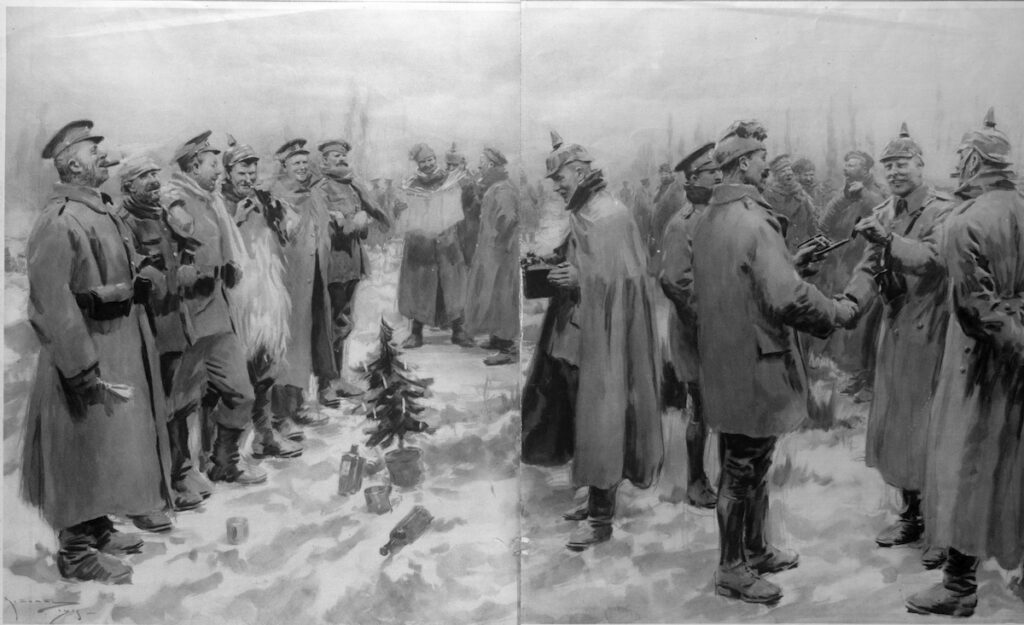The Christmas Truce of 1914 was a significant event during World War I, where German, French, and British soldiers on the Western Front put aside their differences and shared a moment of humanity. Despite enduring the horrors of trench warfare, the soldiers initiated a temporary ceasefire during Christmas, seeking moments of peace and unity. They ventured into No Man’s Land, exchanged pleasantries, sang carols, and even organized football matches. This truce revealed the human face of war, creating bonds that transcended nationality and emphasizing the soldiers’ common humanity. While subsequent truces were discouraged, the Christmas Truce of 1914 continues to serve as a powerful symbol of resilience and the desire for peace.
The Christmas Truce of 1914: A Brief Moment of Humanity in the Trenches
Introduction
The Christmas Truce of 1914 stands as a remarkable event during World War I, showcasing a brief moment of shared humanity amid the unimaginable horrors of trench warfare. This temporary ceasefire between German, French, and British soldiers on the Western Front remains a poignant reminder of compassion and unity in the face of unimaginable adversity.
The Origins of the Truce
By the time Christmas approached in 1914, troops had been entrenched for months, enduring unimaginable suffering in the cold and muddy trenches. The war had reached a stalemate, causing both sides to seek moments of respite. The initiation of the Christmas Truce is believed to be spontaneous, triggered by the soldiers’ shared yearning for peace and the celebration of a traditional holiday despite difficult circumstances.
Truce in Action
On Christmas Eve, soldiers from both sides cautiously ventured into No Man’s Land, the area separating the trenches. Initially, soldiers exchanged pleasantries and even sang Christmas carols. Gradually, the atmosphere became more convivial, and troops began to exchange gifts, including cigarettes, food, and even souvenirs from their home countries. Some even organized impromptu football matches, uniting the soldiers in a friendly competition rather than fighting for their lives.
The Human Face of War
The Christmas Truce revealed the human face of war, with soldiers realizing that the men they were fighting were not faceless enemies, but individuals like themselves. Along the trenches, soldiers shared stories, photographs, and personal experiences, emphasizing their common humanity and creating a bond that transcended the barriers of nationality and war. This astonishing demonstration of camaraderie demonstrated that amidst the conflict, soldiers still yearned for peace and longed for a return to normalcy.
Repercussions and Legacy
The Christmas Truce of 1914 was not met with unanimous approval from military superiors. However, at many locations along the Western Front, soldiers defied orders and extended the truce beyond Christmas Day, some continuing until New Year’s Day. In the aftermath, many soldiers confessed that the truce profoundly affected their perception of the enemy and the war.
Unfortunately, subsequent Christmas truces were actively discouraged by military commanders, fearing a repeat of the fraternization and border blurring. However, the memory of the Christmas Truce of 1914 continues to serve as a powerful symbol of humanity’s resilience and the desire for peace, inspiring later generations to strive for harmony, even in the bleakest situations.
Conclusion
The Christmas Truce of 1914 offers a glimpse into the capacity for compassion and reconciliation in the midst of war. Amidst the despair and dehumanization, soldiers momentarily rose above their differences to find semblances of unity and solace. This extraordinary event reminds us that even in the darkest times, there remains a spark of humanity that can ignite, offering hope for a more peaceful world.
